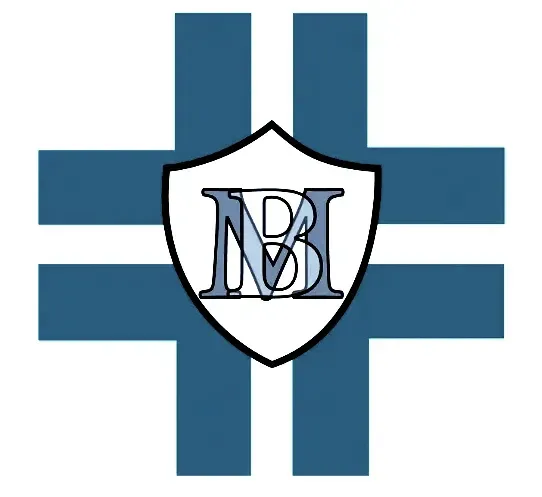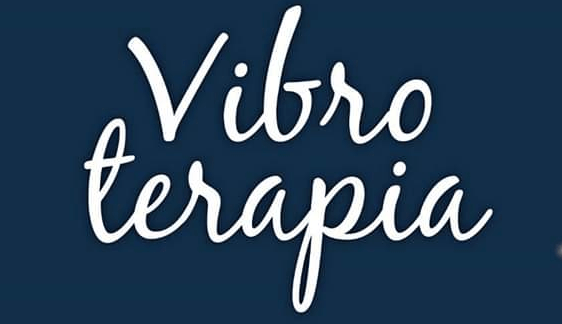Vibrotherapy Guide
This technology has evolved extraordinarily, finding application in the sports field
and aesthetic: the muscles react actively to the mechanical stimulation produced
from vibrations and contract at 100%; at the same time it increases the release of hormones,
produced naturally by the body, increasing fat burning, the draining effect is pressing
even the most compact cellulite.
The results of constant use of vibration training are progressive weight loss
(always associated with a low-calorie diet) and an increase in muscle tone and strength,
with a saving of up to 85% of time compared to traditional workouts.
10 minutes a day three days a week are enough.
Vibration-induced neuromuscular work is similar to jumping repetition training.
Vibration training exerts its effects on both white and red muscle fibers.
White muscle fibers are the ones most used in training
explosive or power type, the results obtained thanks to this training will be
certainly visible and amplified thanks to the increased release of regenerative hormones, but the result
it will also be evident in terms of muscle firming and definition of the already trained muscle.
An increase in the production of GH (growth hormone) allows in fact
faster regeneration of muscle fibres.
VIBROTHERAPY
THE VIBRATING PLATFORM
The "Revolution" of Vibration
Train by vibrating. Improve your power, resistance, speed by doing simple exercises
on a platform that vibrates at predetermined frequencies.
But also treating the elderly, the injured, the after-effects of fractures and progress
of osteoporosis, without having to resort to annoying re-education therapies.
Integrating them successfully.
Here is the new frontier of modern training methodologies.
A method, invented and perfected by Carmelo Bosco, one of the leading experts
in the study of strength and inventor of the famous platform, which bears his name
and which has become the most important tool for measuring explosive strength in many specialties.
Vibration of the right wavelength, according to Bosco, stimulates
the "pressoreceptors", ancestral structures in the human physique, not usually used
by man, legacy of an ancient aquatic nature of our species (they are still observable
in fish, where they have a fundamental function); capable structures
to record changes in environmental pressure and produce an adaptive reaction to them.
The method, which is based on the use of a platform that vibrates during execution
of exercises, subjecting the body to beneficial stress.
It was experimented with by NASA astronauts, who used it to support themselves
fit, as well as by the Russian space agency; by the US football champions the Chicago Bulls;
from the national ski and boxing teams, from some volleyball teams and also
of major football, including Roma.
The platform vibrates and stimulates the response of the pressoreceptors, a response
extraordinary, which multiplies the training effect of exercise and electrical muscle stimulation.
Here is how Bosco himself explains his new discovery.
The Interaction between Muscle, Bone and Vibration
The musculoskeletal system constitutes a complex biological machine
to human locomotion.
In order to carry out and implement the various functional requests, this system continually changes its structure
and metabolism, responding to use with changes in both shape and strength.
The two systems are designed to be able to withstand the same level of tension to which it is subjected
the bone structure.
A constant "overload" that ensures a biological stimulus through structural factors
and metabolic, maintaining the tissues, both bones and muscles, within a limit of functional safety.
A period of prolonged bed rest or immobilization caused by injury
it can weaken its structures so much as to limit its functions.
Some common diseases, such as osteoporosis or myositis, reduce the quality and quantity of
bone and muscular structures with the relative degeneration which manifests itself with clinical symptoms.
When the daily loads to be supported are drastically reduced, it follows
a remarkable muscular atrophy whose half-life lasts approximately 8-10 days,
with a selective degradation of the protein structure that forms the contractile component
of the muscle, especially the slow fibers.
This is the main cause that promotes dysfunction and decreased strength
both bones and muscles with the onset of old age.
It has been suggested that exercises of short duration but very high intensity produce positive effects
on bone-muscular and joint structures; so much so that it is the mass
and strength are maintained at a high level in response to these cyclic strains.
But normally man is sedentary, especially if he is advanced in years.
And, often, his physical activity is reduced to simple locomotion for normal daily functions.
Human locomotion that occurs daily represents the minimum mechanical stimulus
which ensures basic muscle tone.
This is why old people are advised to walk a lot.
This stimulus, which is generally required to overcome the force of gravity,
it is just enough to protect the bones from fractures.
Indeed, during locomotion, at the moment of impact on the ground, a train of shock waves comes
generated and transmitted throughout the body.
These vibrations are transmitted through the foot, leg, spine and neck.
All this represents a strong stimulus for the formation of bones during human life.
Unfortunately, the modern conception of life severely limits activity
of movement, with a strong increase in hypokinesia and therefore this resolves
in a negative effect on the musculoskeletal system.
To compensate for the lack of movement, several projects have been planned
to stimulate and induce the population to increase physical activity, unfortunately
due to lack of equipment and an incorrect lifestyle this does not happen.
Or it happens in very small quantities.
Often insufficient to avoid risks.
In this regard, a new training method has been suggested that uses as a factor
of stimulus the effects induced by mechanical vibration.
In fact it has been demonstrated that treatment with mechanical vibration represents
a strong stimulus for the entire organism and especially for the neuromuscular and skeletal system.
Effects of vibration on the biological system.
Basic studies on the effects of vibration on a biological level.
Increasing the frequency of the vibration, from 5 Hz to 30 Hz, was demonstrated
an increase in plasma cortisone concentration in the rat brain, at the same time
a positive correlation between 5-HT was observed with increasing acceleration
ed il cortisone (r=93, P less than 0.01) (Ariizumi and Okada, 1983).
Some authors have suggested that vibrations induce a strong enhancement of activation
of motor nerves through the myotatic reflex (stretch reflex) (Lebedev and Poliakov).
Vibrations have been shown to activate monosynaptic and polysynaptic connections in humans.
The latter are responsible for generating reflex contractions, while the former only influence temporal patterns
of impulse trains of motor nerve pathways (Burke and Schiller, 1976).
Studies on vibrations applied in the sports field.
Vibration treatments have been shown to increase respiratory volume
ed il ventilatory volume/minute.
These responses are most likely to be attributed to dating segmental vibratory reflexes
to inspiratory and expiratory muscles (Homma and coll. 1981).
A mechanical improvement of the leg extensor muscles (mechanical power developed
during press exercises with loads of 70-140 kg.) has been noted in some volleyball players
nationwide after acute administration of just 10 minutes of vibration.
These vibration treatments were administered in two five-minute sets
in which, after a period of one minute of vibrations, a minute's pause was enforced.
Each set lasted an actual five minutes of vibration.
The athletes were subjected to total vibration treatments while standing
in a half-squat position on a vibrating platform that oscillated
at a frequency of approximately 30 Hz (Bosco et al. 1999a).
In a subsequent experiment an increase in muscle power was observed during
jumping performance after only 10 days of treatment with applied vibratory stimuli
only for 10 minutes a day on well-trained athletes (Bosco et al. 1998).
An acute administration of five actual minutes of vibration, alternating
one minute of vibration treatment to one minute of rest, applied to the arm he showed
a statistically significant increase in the muscular power of the arm flexor muscles
(biceps humerus and brachius radialis) on some international level boxers (Bosco et al. 1999b).
An increase in mechanical power during execution was noted
of 30 repetitions of forearm flexion on the arm with a dumbbell,
subjected to vibration, of 2.8kg.
The improvement was attributed to vibration-induced enhancement of the nervous system
(Bosco e coll.1999c).
Furthermore, it would seem that vibrations lead to an alteration of the inhibitory systems
which are generally present during the execution of voluntary caused movements
by a reduction of stimuli originating from the CNS towards the motor nerves (Davies and Bailey 1997).
Finally, it must be remembered that exposure to vibrations leads to the stimulation of some hormones.
Studies on the effect of vibration in rehabilitation and muscle atrophy.
Clinical studies conducted on patients with peripheral nerve trauma and joint contractures have demonstrated effectiveness
of vibration treatment accompanied by classical traction methods (Levitskii et al. 1997).
Recent experiments have highlighted a remarkable improvement
of the flexibility of the spine and leg flexor muscles after vibration treatment.
This method, unequivocally, has proven itself by far
more effective than traditional methods, such as ballistic, passive stretching,
the static one and the PNF (Bosco et al. In preparation 1999).
Vibratory stimulation recorded an improvement in pain in 69% of treated patients.
The application time was around 24-25 minutes, while it turned out to be more effective
also applying a weight of 1 kg.
Treatments with high frequency vibrations appear to induce less stress
both tendons and muscles (Park HS and Martin BJ, 1993).
It has been suggested that not only nervous tissues are strongly affected
from vibration but also muscle tissue.
In this regard, 5 hours / day for two days were sufficient to induce an increase
of the section of both slow and fast muscle fibers of rats subjected to two different
frequencies of vibratory treatments (Necking LE et al. 1996).
Studies on vibration applied in geriatrics and osteoporosis.
Although studies aimed at the application of vibration to improve osteoporosis (osteopenia)
they are difficult to find in international literature, it can be strongly stated
that these new methodologies present undoubtedly effective indications.
These statements are supported by the fact that the evident improvement
of the muscular functions induced by the administration of vibratory treatments produce
very effective stresses on the biological functions of the bones on which they are inserted.
These stresses are especially evident on the transverse axis, which is the one
weaker and therefore more subject to fractures (Bosco 1999).
SO THE POWER VARIES WITH VIBRATIONS
Variation in muscle power as a function of age. In sedentary subjects
and trained, the maximum expression of muscular power is noticed towards age
of 20-30 years, after which there is a decrease that runs almost parallel to aging.
With training it is possible to slow down the decline induced by old age.
The effects of vibration cause further improvements not only in sedentary subjects
but also in trained subjects (Bosco et al. 1998-9a,b; Bosco and Komi, 1980)
Sectors of use
Vibration training is used for multiple purposes:
• In the sports field, with objectives of increasing the strength component
explosiveness, power, resistance, speed.
• In fitness and aesthetics, thanks to the hyperactivation of the metabolism, for improvement
of cardiovascular capacity and the reduction of adipose components.
• in rehabilitation, both post traumatic and treatment of problems
of elderly people, for the ability to intervene in the recovery of limb-muscle flexibility
and as a strong antagonist to osteoporosis phenomena, without resorting to long therapies.
Principles of action
At a muscular level, the sensitivity of muscle neuroreceptors to vibrations determines the so-called
tonic vibration reflex, which leads to an increase in contractile force in the muscles involved.
The muscle-tendon assembly subjected to the train of vibrations changes continuously
its length, rhythmically, with a process similar to what happens later
to concentric and eccentric contractions, in rapid succession.
As evidence of the strong muscular involvement, recent studies have recorded the increase
in oxygen uptake.
Explosive strength improves thanks to the greater synchronization of the motor units involved
and the decisive coordination of the synergistic muscles.
Another relevant effect of vibration training is the muscle-relaxing capacity
and relaxing muscle tension, useful as an adjuvant in based protocols
on stretching techniques or within rehabilitation therapies.
There is also a reduction in blood viscosity, as well as an increase in speed
average circulatory flow.
At the hormonal level, adaptive responses cause an increase in somatotropin
(GH, also growth hormone and youth hormone), together
to a lowering of cortisol (linked instead to disruptive and oxidative phenomena).
At the bone level, vibratory stimulation positively influences the mineral density of bone mass,
with enormous benefit especially for those subjects, elderly people in particular, unable to cope
weight training sessions.
This type of training, with progressive resistance (body building), would obtain the same results,
but it would not be practicable both in terms of physical effort and duration, and would therefore be ignored.
And with it the precious effects. Vibration, on the other hand, protects you from any difficulty
both for the immediacy of execution and for the ease of access.













